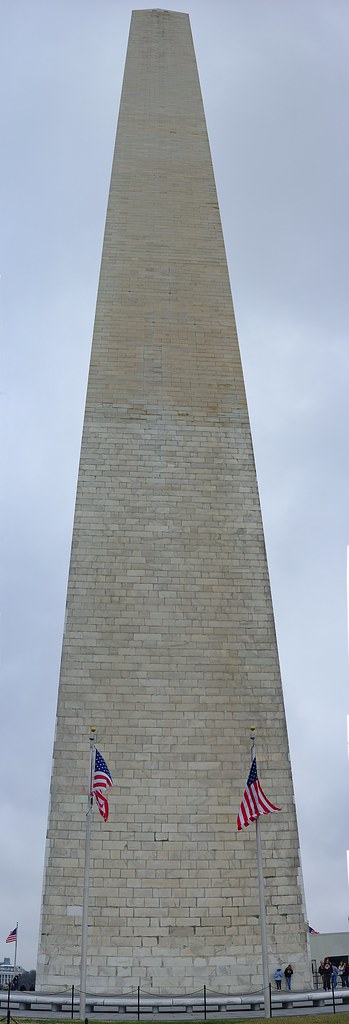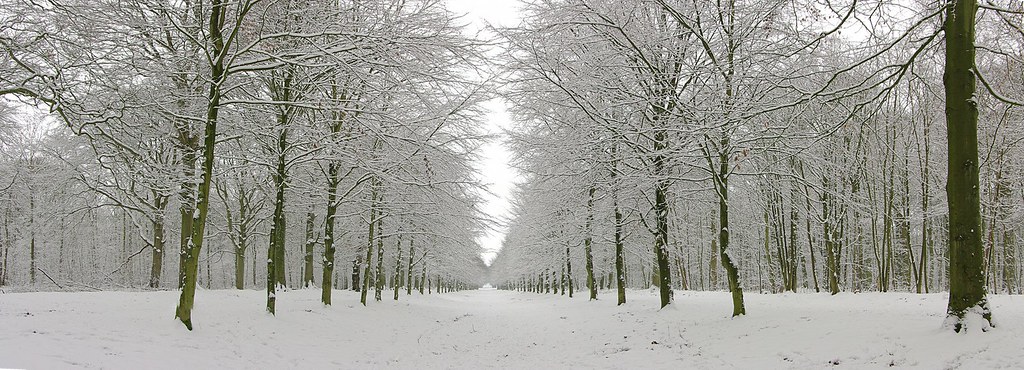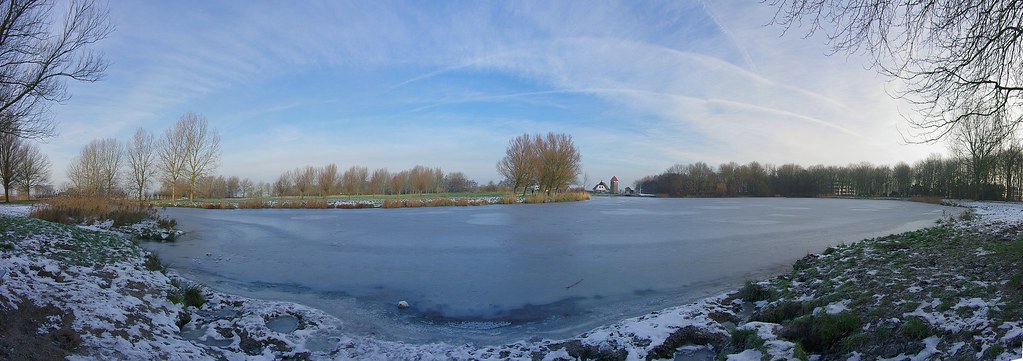Veteran Member Join Date: Jun 2008 Location: Limbo, California |
I've been shooting panos for awhile, with the K20D and older P&S's, handheld and tripodded, with and without a pan head. I've only tried a little stitchware -- I've attempted to install ICE but without success so far, although not since my latest system update. Maybe I'll have another go at it.
I'll mention software first, because that somewhat drives the shooting process. My first stitchware was PhotoStitch, free with a Canon printer. It stitches horizontal, vertical, or in a matrix, but it demands rather careful alignment and positioning and overlay of images. And it can produce curious effects when you tell it to do a 360 degree stitch, especially if you've only fed it two headshots! If you want a pano or matrix that LOOKS stitched, PhotoStitch is great. It's also fast, even with big JPG's.
What I use predominantly now is AutoStitch, available for free online and updated at times. AutoStitch is VERY flexible re: alignment, positioning, overlay. Shoot a scene in both landscape (horizontal) and portrait (vertical) modes, at angles, whatever -- AS pulls them all together fairly seamlessly. Point AS to a directory full of images, and it stitches together everything it can, automagically. AS is fairly good at smoothing over parallax errors, exposure differences, etc. It will even blend mixtures of color and B&W shots. AS has a rather forbidding looking page of Edit-->Options, but the only things you need to touch are JPEG Quality and Scale -- set both to 100, or whatever seems right.
AutoStitch is a quality act, but alas, TANSTAAFL -- There Ain't No Such Thing As A Free Lunch. It takes many CPU cycles to do things right. Stitching BIG panos from BIG images with LOTS of overlap can take a LONG time, depending on your computer. If you're going for sheer size, set the Scale to 10% and do a test run of any stitchup, to see if it'll produce what you want. Figure out just how big a pano you want, then set the Scale accordingly. For big stuff, run it on an extra computer that you won't need for anything else anytime soon. If I feed AS more than four 14.6mpx images, or twenty 5mpx files, at 100% Scale, I figure I have time for a meal or two, at least on my POS laptop. Your mileage may vary.
And be sure to feed it images BEFORE any PP/shooping, unless you want a Frankenpicture effect. But that's true of any stitchware.
OK, now to the shooting technique. Depending on the warez, your source shots should have 10-20% overlap, maybe more. PhotoStitch does better with more; AutoStitch does better with less; other warez may have their own twitches. Some warez will demand careful alignment etc, others won't. Especially if your shots include nearby detail with lines, parallax error can be bothersome, in which case you need to search on PANO HEAD and NODAL POINT to learn how to minimize the problem.
Shoot about 15-25% or more BEYOND the area you want in your final pano, so you have margin for cropping and perspective correction. Some warez with some settings produce rectilinear output, others are more rounded or even fisheyed. PhotoStitch allows such adjustments; AutoStitch doesn't; other warez... I dunno. Some warez produce output with jagged or lumpy edges; others crop, or give you the option to crop. That's why you need generous margins when you shoot.
For a simple pano, hold or position the camera vertically (portrait mode) and shoot horizontal side-by-side shots with sufficient overlap for your stitchware. Shooting horizontal in landscape mode makes for LONG, THIN panos. You can also do vertical panos of buildings, trees, someone close, etc. And some warez (including both I've mentioned) let you assemble panos from a matrix of shots. PhotoStitch insists that they all line up. AutoStitch has no problem with matrices, but gets weird with vertical panos; you might have to rotate everything sideways to get it all stitched together, then rotate everything back when you're done.
Camera details: Use a fairly 'normal' focal length at first; start around 24-35mm. With AutoStitch you can often (but not always) leave auto-metering on; some warez demand that all the shots have the same exposure, or you get unpleasant light-dark patches. It's usually best to use a narrow aperture for deep DOF. Some folks build 360-panos from fisheye or near-fisheye shots. Give it a try. And sometimes I'll take a video, extract every Nth frame, and let AutoStitch piece them together. Uh oh, here comes the Frankenpicture!
OK, there's my Incomplete Guide To Shooting and Stitching Panos. All omissions are my own damn fault. Have fun.
|


 Similar Threads
Similar Threads 

















 Post #4 by RioRico
Post #4 by RioRico








